
Consider, for a moment, the furore over Jaguar going electric. The implications of insisting that the brand required a production full stop before embarking on its new era. Then the fall-out associated with not just the wholesale (and arguably ill-timed) powertrain switch, but also what a new generation of cars would look and feel like. Factor in the contentiousness of the messaging surrounding these events – Jaguar seemingly intent on handing some commentators easy-win ammunition – and you end up with a freakish sort of freight train careening down the line: loud, jam-packed with many compartments and no little notoriety, ostensibly unconcerned with where it has been and yet hugely apprehensive about where it is going to end up. Whether terminal crash or epoch-worthy smash awaits next year, it is unquestionably one of the defining stories of the zero-emission era.
Save for the means of propulsion, the Range Rover Electric is its polar opposite in virtually every respect. JLR has calculated, not unreasonably, that a stagnant Jaguar brand requires explosive change to save it; the Range Rover meanwhile, uniquely and overpoweringly popular, needs no fireworks whatsoever. That it exists and functions within expectations (no small ask) will likely be sufficient for it to become, relatively speaking, another sales behemoth. We know this because Land Rover already has over 60,000 statements of interest, many of them amassed at the announcement stage – but also because the messaging (in stark contrast to the scattergun approach used for Jaguar) is no different to previous Range Rover reveals: it will be new and better, but fundamentally the same.
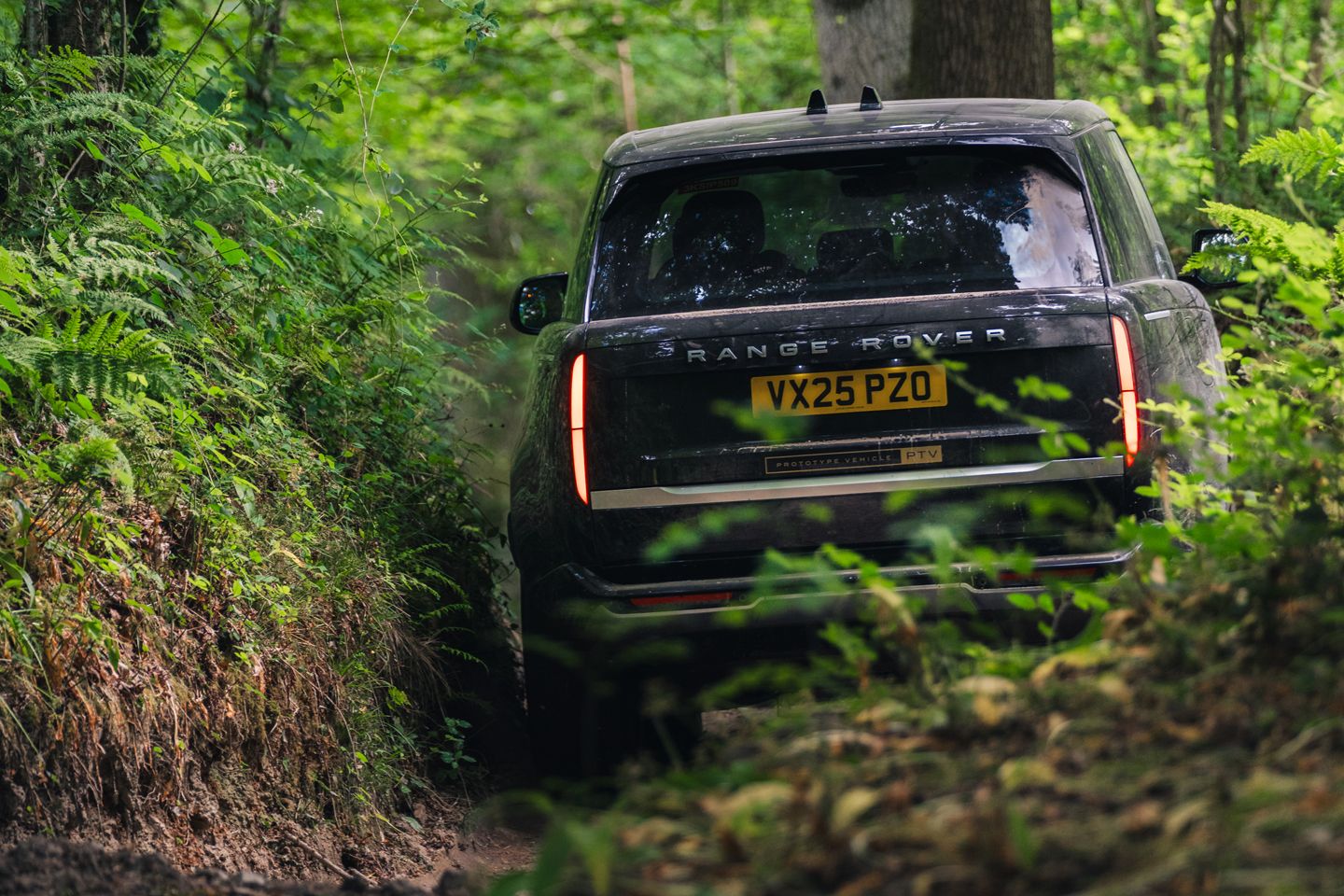
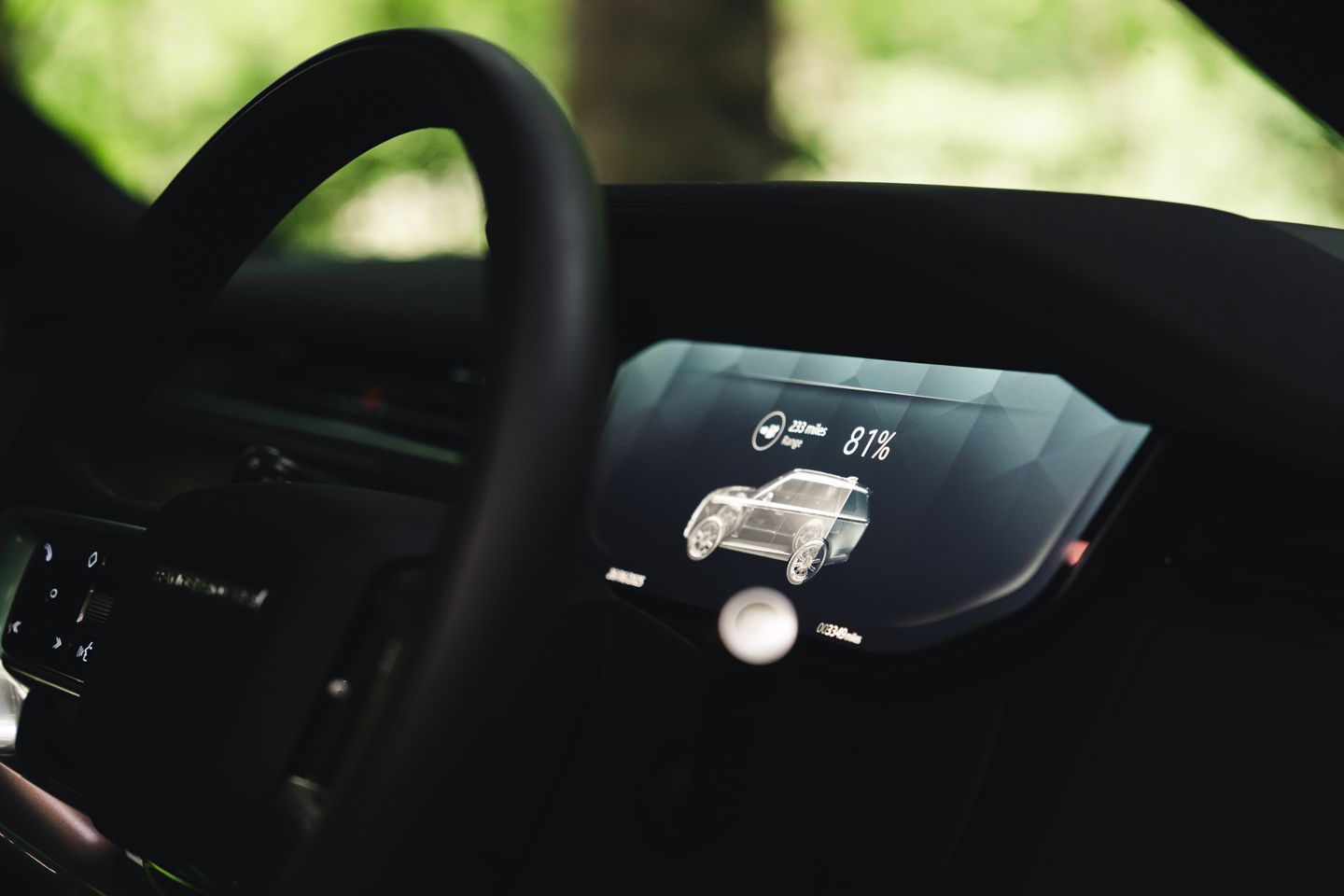
This quality of sameness is clearly a source of comfort to the team developing the car – a team well-stocked with engineers who have worked on Range Rover since Eastnor first acquired a fax machine – although not without the usual anxieties about living up to a reputation that successfully straddles both luxury and off-road segments. Happily for it, the usual platitudes about the advantages of battery power do ring true for both core concerns: as it does for rivals Rolls-Royce and Bentley, being silent and effortless and peerlessly refined are going to do the current Range Rover no harm, ditto the instantaneous torque delivery and the near limitless possibilities for how and where it is dispatched. The Mercedes G 580 proved very recently just how mind-bending the result can be.
That Land Rover has not sought out anything as boastful as ‘G-Turn’ (the capacity to spin around within its own length like a tank) does not mean that it has been sparing with its ingenuity. New Range Rovers typically arrive with a slew of patents pending and the Electric is no different. The manufacturer claims it has filed more than ever this time around, most of them centred on the in-house designed, double stack battery and the dual electric motors, though it is evidently no less proud of ’Thermassist’, which despite sounding like a British Gas add-on, is said to be the most advanced onboard thermal management system in the world. Which is something your EV flagship absolutely needs if you want it to operate effectively in the same places a diesel-powered Range Rover will happily go.
The fact that the Electric looks very much like the diesel model is both a conscious decision stylistically (again, sameness) and testament to the much earlier choice to ensure that the (admittedly roomy) MLA-Flex platform could accommodate a wide range of powertrains. While fitting into the available space between the wheels still required 344 prismatic cells to be jostled into a decidedly chunky 118kWh battery, with its associated control module plonked on top filling the transmission tunnel, the resulting housing is said not to impinge on either interior space or boot capacity. The Electric’s floorpan is adapted to fit, but architecturally speaking it is unchanged above that, and the model will eventually roll down the same Solihull production line as the combustion and hybrid derivatives.
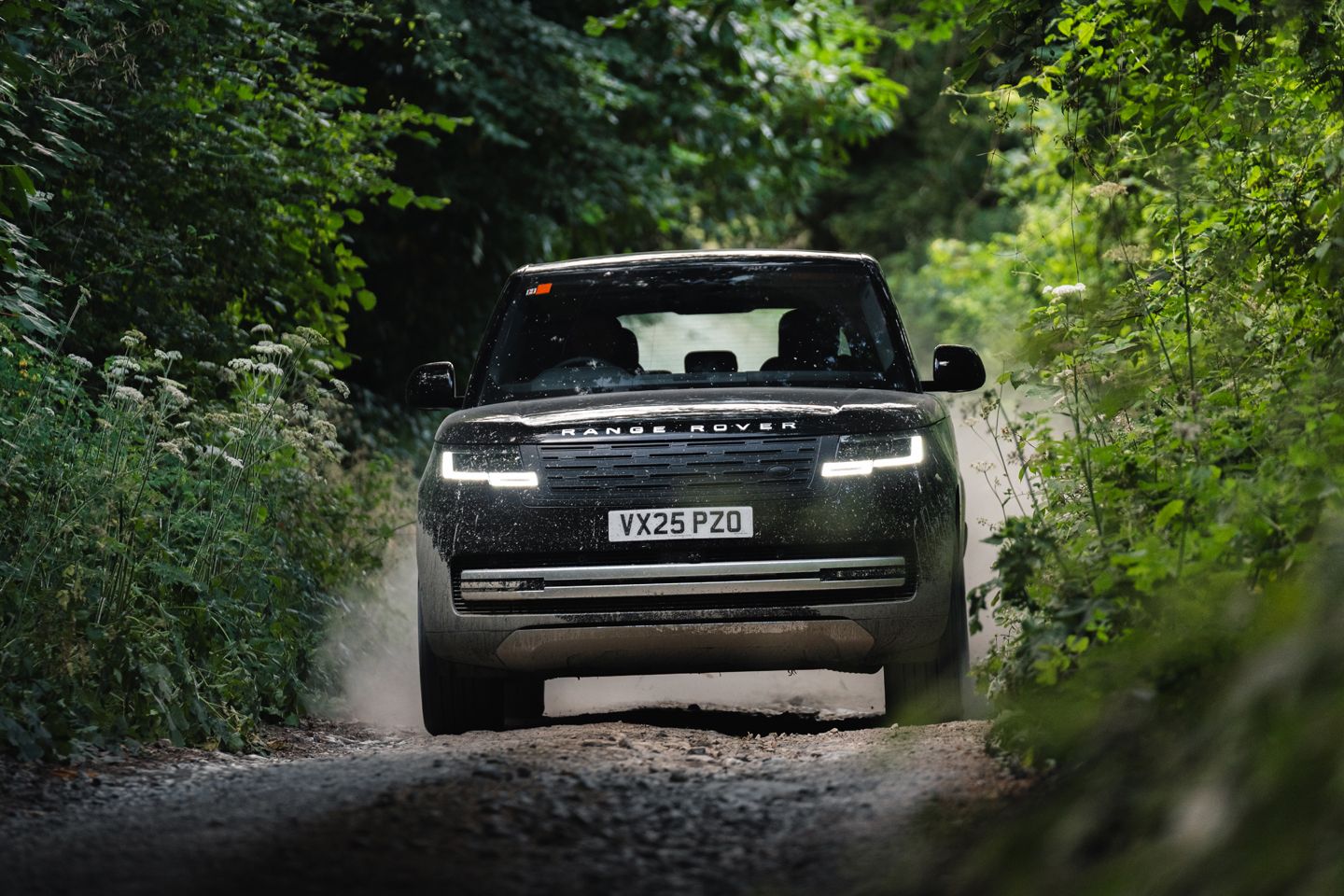
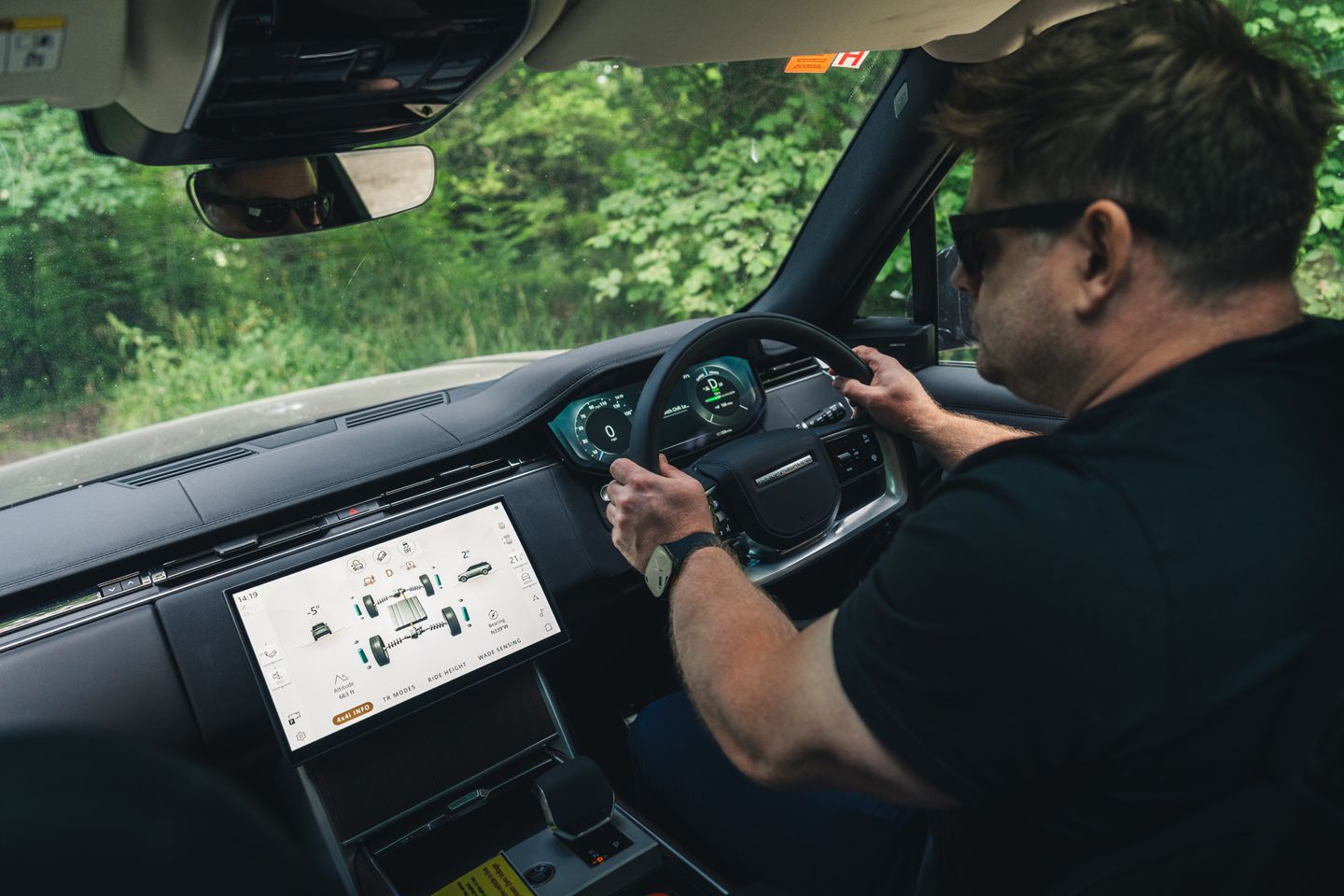
Though the battery is not a structural component per se, Land Rover suggests its substantial presence within the platform has resulted in a torsionally stiffer Range Rover, with a lower centre of gravity than the conventional variants. The decision to stick with one 240kW motor per axle, rather than indulging the vogue for tri or even quad motor configurations is attributed to the results that the manufacturer knew would be achievable with open diffs and the sophisticated new software overseeing them, as well as the weight consideration of adding more drive units. Land Rover is still unwilling to attach an official number to the kerbweight in question, although it suggests that it ought not to be dramatically more than a high-spec Range Rover V8. PH will believe that when we see it, though anything shy of three tonnes will be a significant win.
Whatever the end figure, a similar amount of power has been chosen to shift it. The Electric’s quoted 550hp might be less than the 615hp available to the current mild-hybrid range-topper, but 627lb ft of torque comfortably exceeds the 553lb ft that doesn’t appear till 1,800rpm in the V8. As you might expect, while delivery is essentially instantaneous, Land Rover subjects it to all manner of measuring and metering in the EV so that it feels appropriate to whatever task is at hand and (ultimately) doesn’t overwhelm the tyres. Confined exclusively to the equivalent of sun-hardened nursery slopes at the Eastnor estate for an afternoon, we got to experience only a fraction of that full potential, although as tasters go, it was an illuminating one.
Range Rovers have been wafting imperiously through the woods and waterways of Herefordshire for multiple generations, yet already, and in unfinished prototype format, none surely can have been quite so regal in their capacity for unflustered progress. According to its maker, the Electric’s chassis is basically unchanged in terms of hardware – same four-wheel steer, same twin-chamber air springs, same linkages, same alloy and tyre size choices – and what differences there are in settings can generally be attributed to the increase in mass and the height it is carried. Even these changes were often made so the EV would be better able to mimic what a standard Range Rover does when it is put through the dynamic ringer.
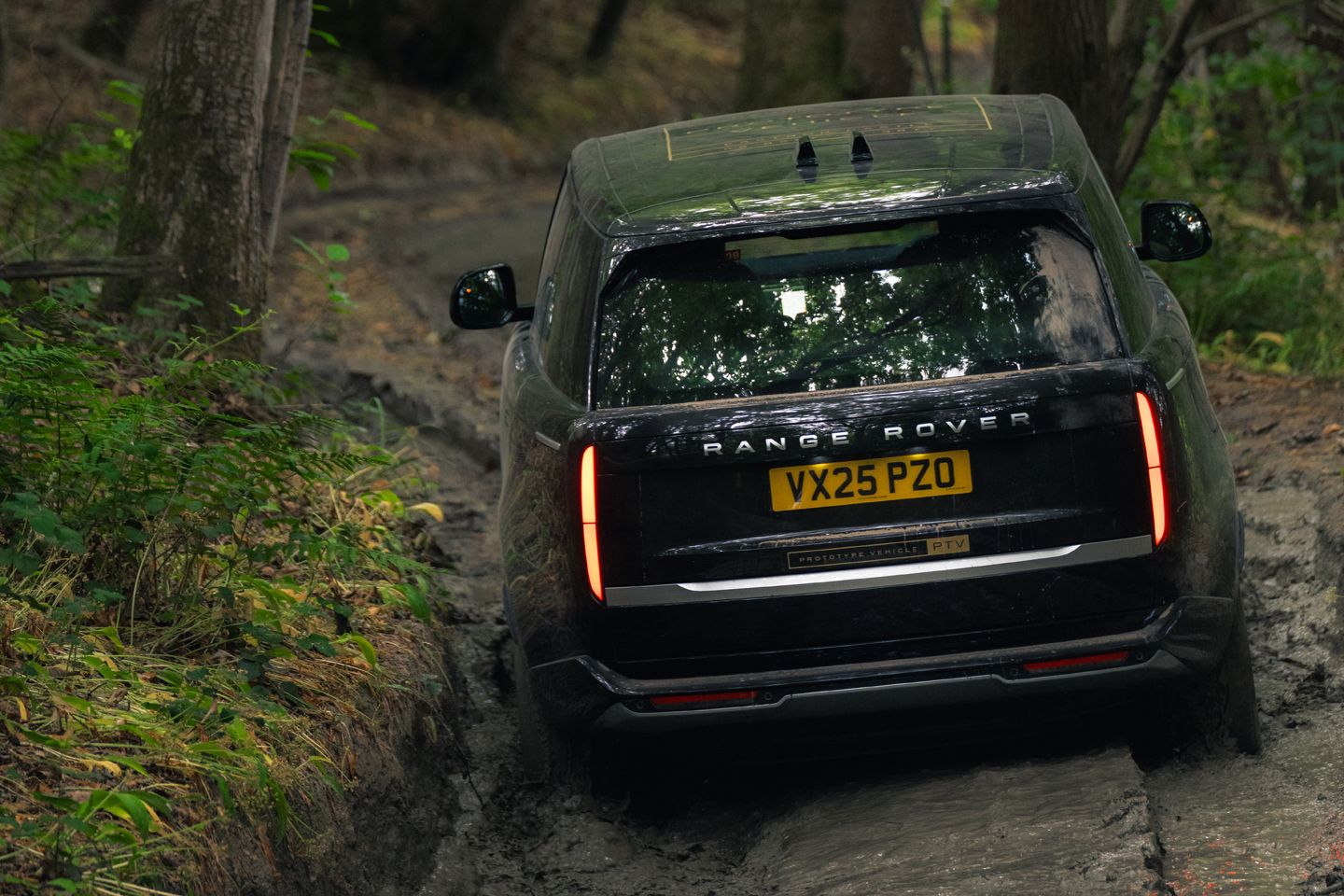
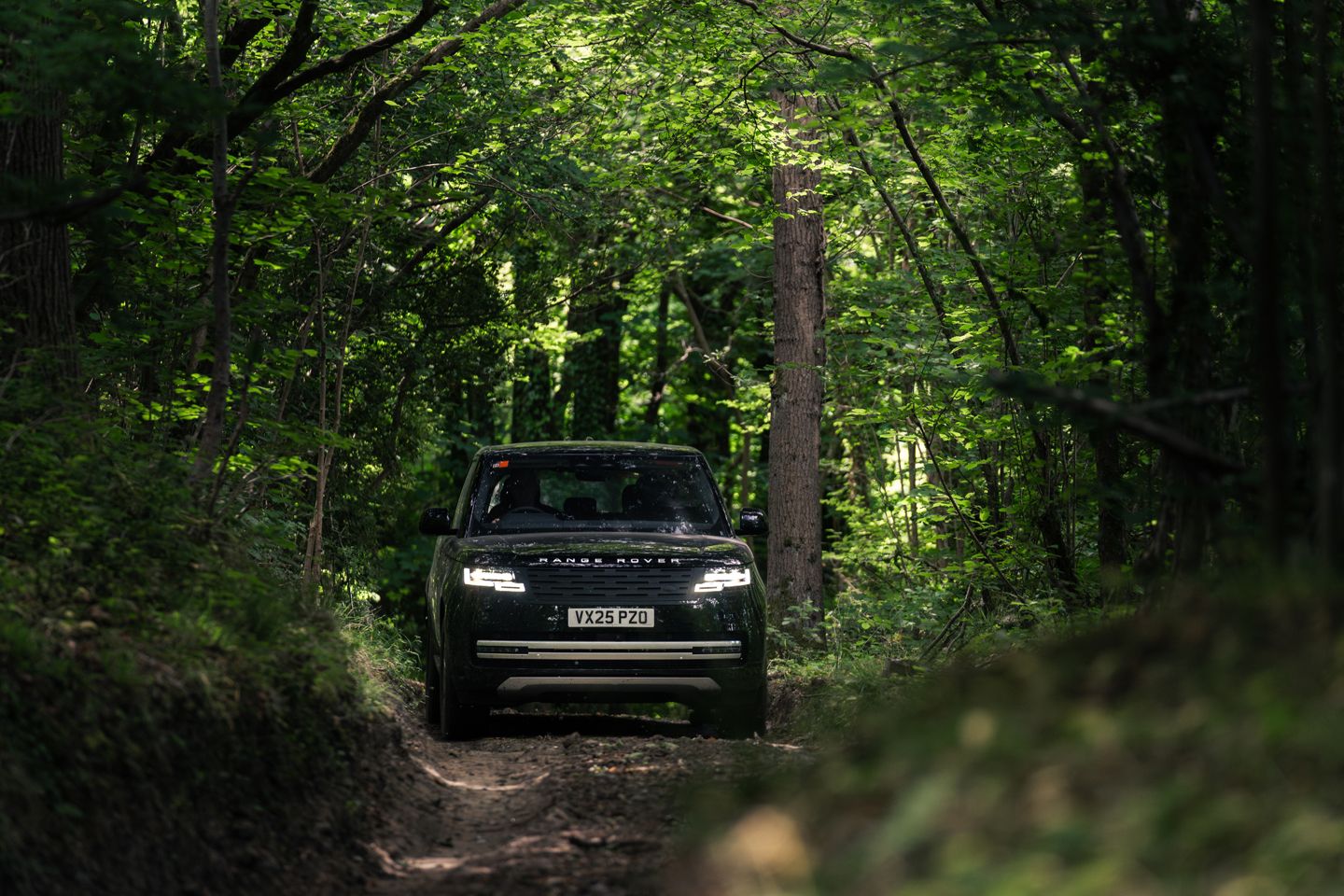
An admittedly slow-speed ringer in this case, but adequate to get a sense of how diligent Land Rover has been with making the Electric feel the same, only more so – and the dividend that its buyers can expect to reap should they opt to trade in a combustion model. It seems insufficient to emphasise the quietness or the calmness or the rolling refinement because a petrol-electric hybrid Ranger Rover already ranks very highly across these metrics (and indeed helped inform development of the EV) yet the distance between it and the Electric will ultimately be how the newcomer is measured, and without an engine to integrate or revs to manage, that space seems almost cathedral-like in its ability to apply an ethereal level of hush to proceedings.
Granted, the Electric feels cathedral-like in other ways, too: there is a deliberateness to its progress that speaks to its endless balancing of unseen forces in the damping and metering of power, but this isn’t conveyed as inertia or lumbering unwillingness – quite the opposite. If there is an obstacle to seriously challenge the remorseless, traction-finding creep of the adapted Terrain Response system, then Land Rover didn’t present it to us. It wouldn’t, of course, but the salient point is that any lingering requirement to maintain momentum between gully and steep gradient (previously a crucial component of off-road driving) now seems all but redundant. The Electric doesn’t bulldoze or power through improbable hazards, it inches inexorably over them like a supercomputer contemplating a chess problem.
Much as in the Mercedes G 580, anything as ungainly as wheel slip seems a distant memory. The speed at which the software is able to identify and control such moments has increased 100-fold. In a G-wagen, this level of attentiveness did take a bite from the burly fun of being amongst the birds and bees, but in a Range Rover, where you fully expect to feel invulnerable, the supreme composure seems in keeping with your immediate surroundings. Moreover, the model’s long-running ability to acknowledge its giant, pillowy footprint and yet simultaneously boil its heft down to credible, intuitive control surfaces is taken to new extremes. If there was any pressure or mental strain in controlling a car as large and as complex as the L460 at Eastnor, it is blown into the trees here. The Electric’s capacity for relieving stress is roughly equivalent to taking Valium before bed.
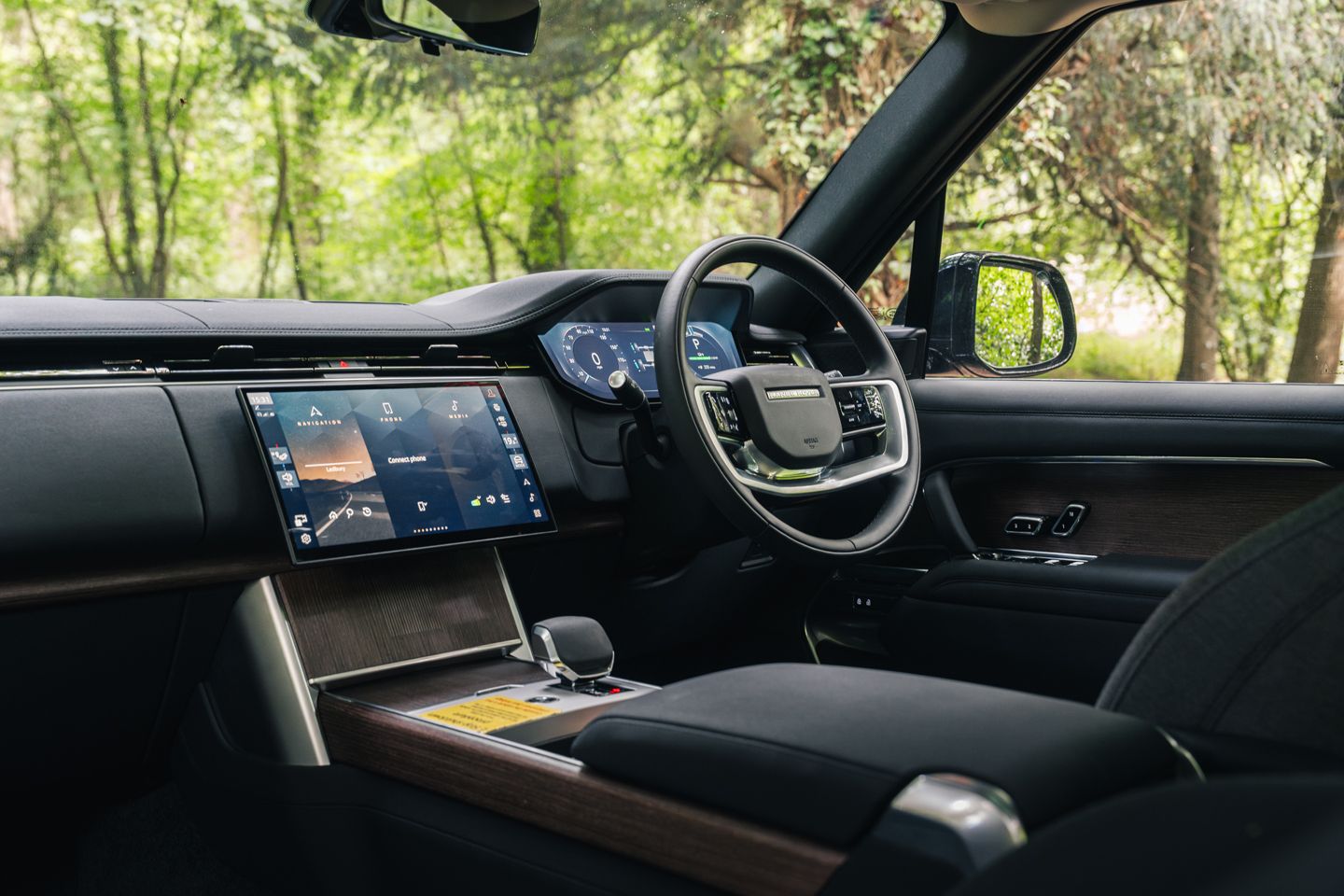
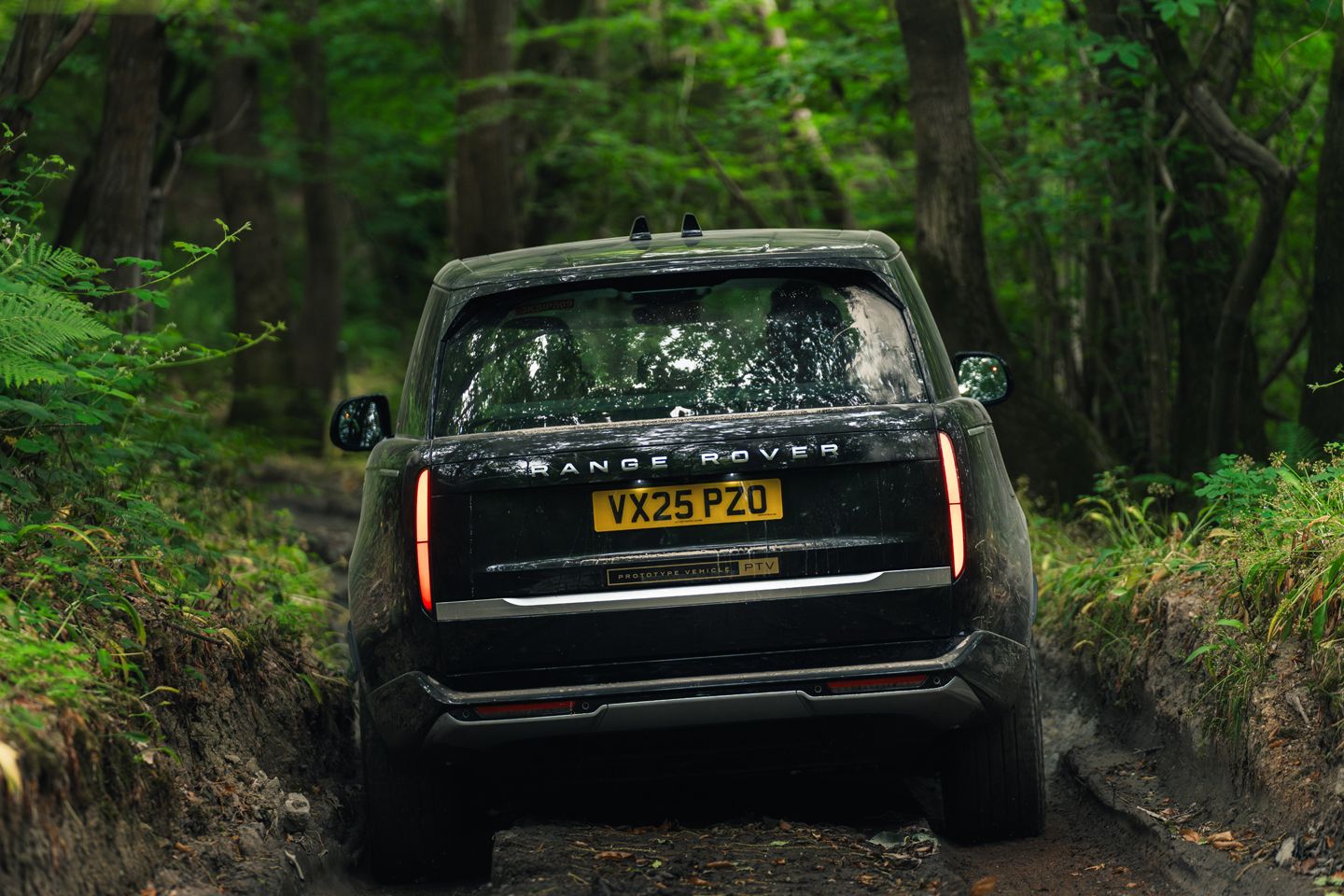
Impressive then, ultimately, for a prototype which is clearly not finished. We say that not just for the presence of the big red cut-off button in the centre console, but also for the occasional moment where the Electric could still be felt to juggle its torque vectoring and brake interventions during single pedal driving – and indeed in one brief instance where it decided to give up altogether and await a hard reset. Electric buyers will also have to accept some limitations that cannot be ironed out by further testing: 30mm ground clearance has been sacrificed to the positioning of the battery, and its breakover angle has similarly been reduced by four degrees. Predictably, you will not be able to drive it so far without stopping either (a 300-odd-mile real-world range has been mooted) although it will almost certainly charge at 350kW when you do.
Beyond all that, we obviously await the complete picture that is a much lengthier road drive. But Land Rover’s reasoning that an early glimpse of the Electric’s low-speed capabilities would suffice for now is hard to fault: just as it’s hard to imagine that the car’s wonderfully mannered performance at Eastnor wouldn’t seamlessly translate to crawling around a global city. It is precisely that sort of bandwidth – wading implacably through 900mm of water; wading implacably through traffic – that has drawn people to the dealership door for decades. With no lap time to set or noise to emulate or speed record to hit or even (as yet) a genuine rival to pit it against, the chances of someone recoiling from Land Rover’s first-ever EV in horror seem remote to the point of non-existent. But just in case they do, there is no plan to stop selling the V8 alongside. Talk about the luxury of choice. And insult to injury: Jaguar fans must be green with envy.

